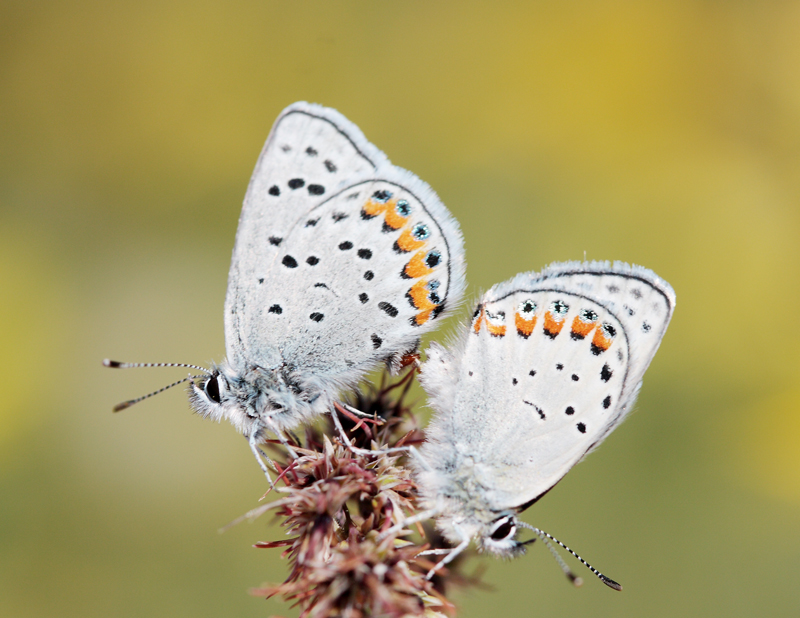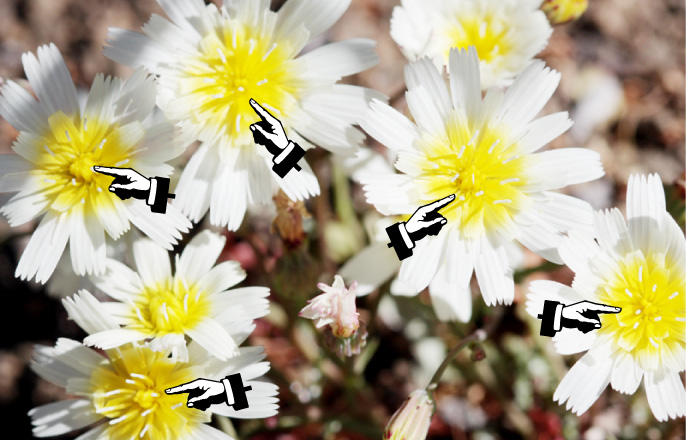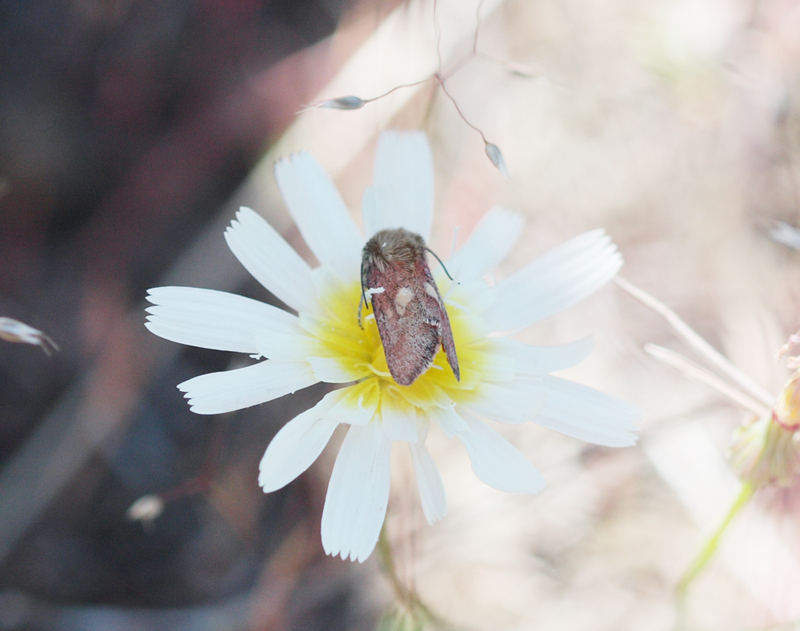Untuk empat hujung minggu yang lalu sekarang saya telah mengejar angsa, untuk satu rama-rama, Heliolonche celeris. Ia adalah Noctuidae kecil yang cantik dengan sayap depan merah jambu dan sayap belakang merah jingga yang menakjubkan. Ia tidak begitu kerap ditemui dan hanya ditemui di sepanjang banjaran gunung California utara yang memberi makan Malacothrix floccifera – bunga endemik CA. Setiap perjalanan saya telah menjadi skunked, sehingga hari ini – Saya mengumpul dua! Seingat anda, lawatan pertama saya adalah kira-kira sebulan yang lalu, tiada pelanduk, tetapi satu siri spesimen yang cantik dan gambar Adela pelanduk. Beberapa perjalanan yang lalu belum lagi menjadi produk yang produktif seperti Adela. Jadi apa yang perlu dilakukan apabila tidak menemui sasaran anda? Dapatkan sinar matahari dan ambil beberapa gambar yang tidak menyenangkan.
 Terperangkap dalam perbuatan itu. Plebejus acmon
Terperangkap dalam perbuatan itu. Plebejus acmon
(bersambung di bawah)
Bukan pelanduk.
 Tiada rama-rama, tiada pelanduk, tiada pelanduk…
Tiada rama-rama, tiada pelanduk, tiada pelanduk…
SATU PENYAKIT!
ini H. celeris sedang mempamerkan tingkah laku rama-rama bunga yang tipikal, duduk di atas kepala bunga biasa seperti hari. Mereka sebenarnya kekal seperti ini sepanjang malam di atas bunga (walaupun ia menutup di sekeliling mereka seperti yang dilakukan oleh sesetengah bunga – yang menyebabkan mereka dikenali sebagai “rama-rama taco”… kerana punggung rama-rama melekat melepasi kelopak dan kelihatan seperti dalam taco). Dan inilah sebabnya saya meninggalkan apartmen saya di 6 pagi ini untuk tiba 8. Jika ia masih sejuk, mereka tidak berkedut apabila anda mendekati. Dan, jika mereka tidak terbang, mudah untuk meninjau kawasan untuk rama-rama dan ketahui bahawa anda tidak terlepas sebarang. Tetapi, sebaik sahaja matahari menghangatkan mereka, mereka menjadi bajingan dan lenyap sebelum anda boleh mencapai penutup lensa. Ini menjadi rama-rama pertama yang saya lihat hari ini, saya benar-benar tidak berusaha untuk mengambil imej yang hebat. Subjek mempunyai tabiat buruk untuk terbang sejurus selepas anda mendapat pukulan yang baik (baiklah, selalunya sejurus sebelum pukulan yang baik)… dan saya tidak boleh mengambil risiko kehilangan satu-satunya spesimen pada hari itu.



Where’s the “like” button? Great pics and good commentary.
“Tiada rama-rama, tiada pelanduk, no moth…”
Ha. I lol’d.
It is a pretty little thing…
A colorful, day-flying moth that sits prominently in the center of flowers – chemical defenses?
Itu soalan yang bagus, and it has crossed my mind before. There a lot of these small day flying flower moths that are clearly not cryptic yet I haven’t ever read about any chemical defenses or mimicry. I also don’t think of Malacothrix as a particularly noxious plant… will investigate.
baik, now I have to post the latest mystery moth pics I took a few days ago. (4/30) Pretty please if you have a moment, check it out and render your sage opinion. !
Ted’s question has nagged me this week. I’ve never heard of anyone studying this, tetapi… Has anyone seen these flower moths under UV? See a related flower species under UV here: http://www.naturfotograf.com/UV_SENE_AQU.html. Maybe, while sitting on the bulls-eye, these moths become “invisible” to predators who see UV, such a birds. The added bonus for the moths is this might increase their chances of finding a mate which is attracted to the UV bulls-eye.
You have to be right about that Katie, I’ve been thinking about this too. I can’t recall any literature in reference to adult insect UV crypsis. There is some work in regards to caterpillars… but I’ll have to do some more digging. Birds are probably not the primary predator on these moths since their acute vision makes them incredibly difficult to approach in the daytime. Tetapi, most lizards see in UV and these flowers are just about at head level for most small reptiles (and there were a ton on site).
Sometimes, the light bulb just turns on.
So there is a monograph to this subfamily – and in there Hardwick (author) points out the counterintuitive crypsis of this moth! Instead of a good idea he postulates
Jadi, he just assumes they are oddities because the flowers changed without them and they survived “possibly because of a decrease in predation pressure”.
Seems to me that UV crypsis is much more likely. Dan… I don’t believe that’s been shown in adult Lepidoptera. Add it to the list!
; ) Just make sure you credit me for this idea when you become the ruler of the universe, er… recognized expert on lepidopteran UV crypsis. I’m glad you looked it up. Please let me know if you find out any more info.